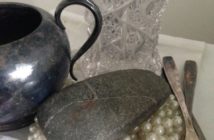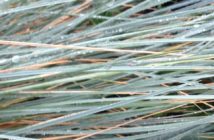Coming Home to Sicily, Seasonal Harvets and Cooking from Case Vecchie, Fabrizia Lanza with Kate Winslow. Photography by Guy Ambrosino,
Sterling Publishing Co, New York
This is the story of a Scilian family and their heritage estate. It is also an easily readable, beautifully photographed insight into the rural life of Sicily through its seasons and seasonal foods.
“Lentils, favas and peas are the backbone of Sicilian peasant cuisine. For centuries, these were the only proteins that poor people could afford and easily grow in their own fields.” “Eggplants are to Sicilians what potatoes are to the Irish.” “Winter is the citrus moment in Sicily. We are literally surrounded by oranges, lemons, tangerines, grapefruit, kumquats, and citrons. The orange tree is our natural Christmas tree! Not surprisingly the Sicilian word for “garden” – giardino – actually means citrus gardent”
There are vignettes of staff members, their roles and culinary specialties. It’s more than fascinating to see the usually and casually dressed preparing food – it’s literally a world away from the white gumbooted and hair-netted visions of food prep New Zealand.
I won’t be making some of the recipes but others provide doorways to stylish and tasty eating using relatively cheap and basic ingredients. Read it for the pictures if nothing else. I’m renewing this book!
1960s Fashion Print , Marnie Fogg,
Batsford UK 2008
A “Fashion thrives during periods of intense cultural activity. The 1960s saw an explosion of all that was new and modern…fashion was a persuasive presence in contemporary life becoming a resounding medium of self -expression. Print was integral to this process …” From beginning to end this is a must read historical pattern and design book. If you were a child of the 60’s it will take you back. If you were not, it’s more than an insight into those times. This is a book that has been well read, each page lies flat, displaying multicoloured often intricately designed patterns. Photographs of models of the time are included. Twiggy is there looking usually sized and positively street normal.
Handmade for the Garden 75 ingenious ways to enhance your outdoor space with DIY tools, pots, supports, embellishments & more, Susan Guagliumi
Stewart, Tabori & Chang USA, 2014
Magazine style gardening projects. Lovely pictures. Best ideas – putting a smaller terracotta pot inside a larger one creating a “moat” to keep the plant consistently moist. Also seedling and seed containers from multilayered newspaper. This would be of interest to a young gardener and/or a gardener looking for economical and stylish ways to enhance a garden.
Otiwhiti Station – The Story of a Hill Country Station and Pioneering Polio Hospital, The Duncan Family with Vera Hunt and John McCrystal, Photographs by Peter McDermott
Random House, New Zealand, 2011
This is another story of early land transfer, European settler development and the contribution played to New Zealand agriculture by the Duncan Family. It’s important as a personal record of those aspects of extended family life. It is far more important because it records the dedication of Sir Tom, Lady Jeannie Duncan and the Duncan Family to the development and on-going financial support of a polio hospital and the treatment methods of “Sister Kenny”.
(Prior to the development of the Salk vaccine poliomylitis was a scourge many today would find hard to understand. The international service group Rotary has for years had as a major focus the support of polio erradication programmes in less developed countries.)
Liar Moon, Ben Pastor
Bitter Lemon Press, 2012, first published 2001
Anyone who has been listening to the recent National Programme series of readings about New Zealand conscientious objector Archibald Baxter will know that cruelty and kindness are not nationally or ethnically exclusive. Liar Moon is set in the divided Italy of 1943. The North remains Fascist and German controlled. The South has been been liberated by Allied forces. The Italian government has switched sides and declared war on Germany. This is a murder investigation with interwoven and underlying themes. Appropriately for our ANZAC month this book reveals the complex loyalties and values of its wartime participants. There is a Schindler’s List undercurrent which adds a dimension to a character and a reality to the story. The book is dedicated “To those who were in the trucks bound for the concentration camps.” Luna Mendax “ A Liar Moon” (Latin Proverb).
In the dark, Brian Freeman
St Martins Press, New York, 2009
It’s a murder mystery, intricately unraveling a death of times past. The environmental writing is exceptional. I’ve chosen two pieces which are indicative of the calibre:
Page 75 “Gary, where Clark Biggs lived, was one of the many small communities that had lost their way in the superstore generation. Its main street looked like a movie set out of the 1950s. Its brick buildings were mostly abandoned. Paint flecked away on old signs advertising Coca-Cola and Miller High Life. Between every building was an empty lot with weeds growing through cracks in the concrete. The bars were the new economic backbone of these towns, and they kept the Duluth police busy every night after midnight.” and
Page 236 “Fargo was flat. The kind of flat where highways disappeared into the hazy horizon without so much as a bend or an overpass and where only the curve of the earth blocked a view as far as Montana. The kind of flat where Canada would suck in its breath and expel wind across the plain with nothing in the way to slow it down, rocketing walls of black dust, rain, and snow into the city in fierce clouds. The kind of flat where a trickling, muddy stream like the Red River could lazily swell over its banks and drown everything in its path, like a pitcher of water spilling across a table.” This was a very good read.
The Stonecutter, Camilla Lackberg
Harper Collins, London 2010 translated from the Swedish by Steven T. Murray.
This is a gripping yet hideous study of family and community. Many are not what they seem. Undercurrents of family violence and abuse weave through generations. Religious fanaticism, obsession and mental illness. The subject matter is grim; the contemporary story is real. I found the explanatory backstory less satisfactory and at times almost clumsy in presenting historical reasons for present day actions. This is however an absolute “unputdownable” read.
The Blood of Crows Caro Ramsay
Penguin UK 2012
I’d like to think the level of criminal organisation and violence described in this book is fictional, but it isn’t. Again there are no clear boundaries between police and criminal and right and wrong. Justice is a pragmatic concept. Geographically it’s Scotland and Glasgow organised crime but the themes are international. This is the fourth in a series featuring an abrasive working police partnership. It’s not Inspector Morse. Again worth reading to remind ourselves of issues such as people trafficking and child exploitation.
Tauranga City Libraries Book Club meets:
3rd Wednesday of every month of 2014 at the Tauranga City Library
10.30am to 11.30am and 5.30pm to 6.30pm
Papamoa Library Book Club meets:
3rd Wednesday of every month of 2014 at Papamoa Library
10.00am
CLICK HERE for more information
Read your way around the world – novels, food, travel, history, memoir or DVDs – May is New Zealand!





